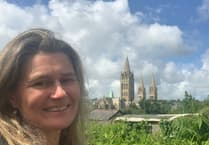IT’S been a quiet week in the village apart from Mickey having a funny turn in the pub, but we realised it had dawned on him it was his round, so he recovered quite quickly. The sympathy was enormous, of course, which reduced when we realised he’d left before buying it. Next week will be interesting.
However, the big news was a November snowfall and, being the highest village in Cornwall, it was pretty thick. What with the village roads being dug up for weeks and randomly shut for some fancy broadband to be installed, getting about isn’t easy.
Of course, with schools shut there was one delighted grandson, who was very excited about getting out. We duly did this on Alex Tor, where it was laying pretty thick, and were able to give him a few decent sledge rides.
I recall, just, the winter of 1963, when I was about Tom’s age and my grandad taking my brother and I out sledging in the Pennine hills - it was pretty scary as they seemed exceptionally steep, at least they do now.
The snowiest place in Britain is the Cairngorms Chairlift, averaging 76 days a year, but I have to admit I’m happy with the odd day, personally.
Interestingly, Inuits have many different words for snow: in Nunavik, where I was recently, they have 53 words including “quanik” for falling snow and “pukka” for powdery snow. And we just have snow, wet snow and slush.
Funnily enough, snow isn’t white, it’s translucent, the apparent whiteness coming from reflected light.
But you can’t deny, as we stood on top of a chilly Alex Tor in the dusk, the snow-covered landscape looked magical and the distant Cornish Alps, white in the gloom, looked like Mont Blanc. What a place to live.
• Fred Knobbit is a nature blogger. He grew up in the Pennines in Lancashire on the edge of an industrial town but is now safely in Cornwall. You can read his archive at www.bodminblogger.com




